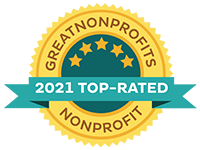Contributions of Neuro-linguistic Programming in School Education
Neuro-linguistic Programming, had its origin in the 70s, with the studies of Richard Brandler, in mathematics and computer science, at the University of California in Santa Cruz. After some time, Richard decided to study psychology and observed that when a person thinks about a traumatic or difficult event, successive times in a positive way, the event stops being worrisome for the person. Therefore, Brandler found that the way you think about something, makes all the difference in how you are going to experience it. This discovery was named by Neuro-linguistic Programming as Modeling of Human Excellence, and consists in the reproduction and transformation of behaviors and beliefs.
Enthused by studies on human behavior, Richard Bandler started a Gestalt therapy group made up of students and members of the local community. John Grinder, professor of linguistics at the University of California, agreed to oversee Brandler’s therapy group. Discovering the similarity of their interests, they decided to combine their knowledge in computer science and linguistics. Programming the minds of people through the use of language, is based on a set of models, strategies and changes in the beliefs that their practitioners use in order to achieve excellence in personal and professional development. Based on linguistic and behavioral patterns Richard Bandler and John Grinder built mental models that could be used by others in different areas of life such as work, school, health, emotions, business and interpessoal relationships. Programming: Our thoughts, feelings and actions can be programmed and modeled so that we can reach our objectives and goals.
Neuro: Refers to the central nervous system, which processes the information we collect through our five senses: hearing, sight, smell, taste and touch. Linguistics: Suggests that language (verbal and non-verbal) and how we use it in our daily life, reflects what we think, feel and believe. NLP allows the individual to change their way of thinking and acting in order to achieve the desired and specific results, through the interaction between the brain, language and behavior. Neurolinguistic Programming is a learning model that allows the individual to understand how thought is processed (neurologically), and the impact of this in our behavior and in the decision making. This pedagogical tool allows a student to know and understand how the brain works and how to modify the way of thinking and acting in order to achieve the objectives that are expected from any field of human activity.










